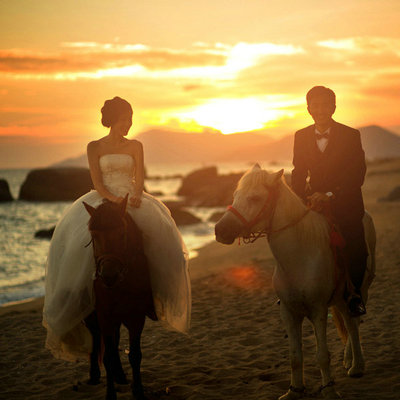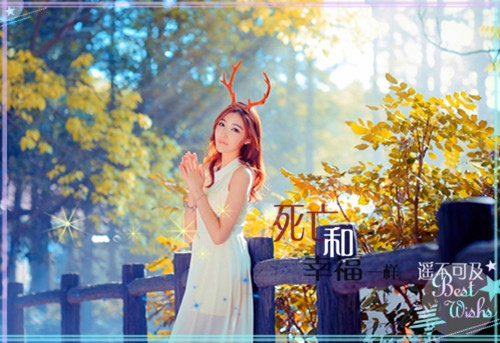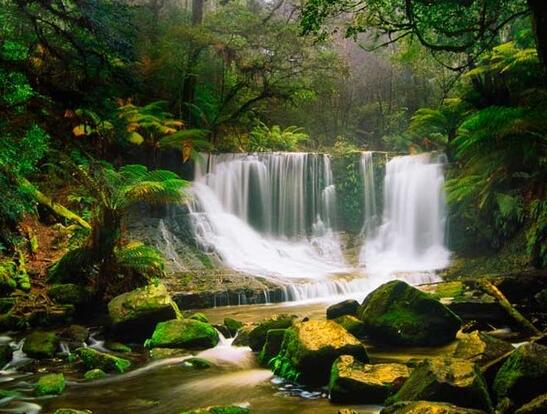
关于长城\\\\颐和园短的导游词
各位游客大家好,今天就有我来带领大家共同游览颐和园。
希望我的讲解能够令各位满意,让我们共同度过这一美好的时光。
颐和园在北京西北部海淀区境内,是我国保存最完整、最大的皇家园林,也是世界上著名的游览胜地之一,属于第一批全国重点文物保护单位。
颐和园原是帝王的行宫和花园。
公元1750年,乾隆在这里改建为清漪园。
1860年,清漪园被英法联军焚毁。
1888年,慈禧太后挪用海军经费3000万两白银重建,改称今名,作消夏游乐地。
到1900年,颐和园又遭八国联军的破坏,烧毁了许多建筑物。
1903年修复。
后来在军阀、国民党统治时期,又遭破坏,解放后不断修缮,才使这座古老的园林焕发了青春。
颐和园的面积达 290公顷,其中水面约占3\\\/4。
整个园林以万寿山上高达41米的佛香阁为中心,根据不同地点和地形,配置了殿、堂、楼、阁、廊、亭等精致的建筑。
山脚下建了一条长达728米的长廊,犹如一条彩红把多种多样的建筑物以及青山、碧波连缀在一起。
整个园林艺术构思巧妙,在中外园林艺术史上地位显著,是举世罕见的园林艺术杰作。
颐和园主要由昆明湖和万寿山两部分组成。
总面积290多公顷。
万寿山上依山而建的佛香阁、铜亭,临湖畔建的千米长画廊、昆明湖中的十七孔桥和石舫等都是游人必到的景点。
颐和园坐落在北京西郊,离城约10公里。
既可以坐郊区公共汽车,也可以坐专线游览车前往。
这座巨大的园林依山面水,昆明湖虽大,但水面并不单调,除了湖的四周点缀着各种建筑物外,湖中有一座南湖岛,由一座美丽的十七孔桥和岸上相连。
在湖的西部,有一西堤,堤上修有六座造形优美的桥。
颐和园里有许多景点是效法了江南园林的一些优点。
如谐趣园就是仿无锡寄畅园建造的。
西堤是仿杭州西湖的苏堤。
颐和园前山的正中,是一组巨大的建筑群,自山顶的智慧海,往下为佛香阁、德辉殿、排云殿、排云门、云辉玉宇坊,构成一条明显的中轴线。
在中轴线的两边,又有许多陪衬的建筑物。
顺山势而下,又有许多假山隧洞,游人可以上下穿行。
颐和园的后山,其设计格局则与前 山迥然而异。
前山的风格是宏伟、壮丽,而后山则是以松林幽径和小桥曲水取胜。
颐和园长廊上的画简短导游词
容提要 The Summer Palace Of Beijing,the largest and best preserved of all Chinese imperial gardens ,boasts many features-a lake that occupies three-fourths of its 290 hectares ,a traditional seventeem-arched bridge , ahill with palatial buildings as weell as quiet spots dotted by rustic pavilions and cottages , a 36-metre Marble Boat to remind visitors that the garden was built by the despotic Empress Dowager of the Qing Dynasty with funds earmarked for a Chinese navy…… 目录 PART Ⅰ I.ANCIENT LEGENDS,FAIRY TALES AND FABLES Mother of Sericulture 嫘祖养蚕 The King Calls on a Young Farmer 尧王访舜 Yaowang Fang Shun 娥皇和女英 Ehuang He Nuying jiang Ziya the Peculiar Angler 姜太公钓鱼 Jiang Taigong Diaoyu King Wen Visits a Wise Man 王文访贤 Winwang Fang Xian Thousand League Eye and Wind Borne Ear 千里眼和顺风耳 Qianlian He Shunfeng'er chenxiang Rescues His Mother 劈山救母 Pi Shan Jiu Mu Han River Nymphs 江妃 Jiang fei …… Ⅱ.THE EASTERN ZHOU DYNASTY(770 B.C-221 B.C) Ⅲ.THE HAN DYNASTY(206 B.C-220 A.D) Ⅳ.THE THREE KINGDOMS PERIOD(220-265) Ⅴ.THE JIN(265-420)AND THE SOUTHERN AND NORTHERN DYNASTIES(420-589) Ⅵ.THE TANG KYNASTY(618-907) Ⅶ.THE FIVE DYNASTIES(907-960) Ⅷ.THE SONG DYNASTY(960-1279) Ⅸ.THE YUAN DYNASTY(1279-1368) Ⅹ.THE MING DYNASTY(1368-1644) PARY Ⅱ Ⅺ.THE STORY OF THE WHITE SNAKE Ⅻ.PILGRIMAGE TO THE WEST XⅣ.THE RED CHAMBER DREAM XV.THE ROMANCE OF THE THREE KINGDOMS XVⅡ.THE YANG FAMILY OF GENGRALS …… 颐和园长廊,发现长廊上187幅人物故事画中有5幅水浒人物故事画,其中包括“林冲风雪山神庙”、“三碗不过岗”、“鲁智深大闹野猪林”、“鲁智深倒拔垂杨柳”和“武松打虎”等。
公园管理处文物部。
秦主任出示了正在编撰过程中的《北京志•文化遗产卷•颐和园志》,其中资料显示:始建于清乾隆十五年(1750年)的颐和园长廊被英法联军烧毁后,清光绪十二年(1886年)重建。
光绪二十八年,在遭受八国联军破坏后,又进行了整修,当时的人物画记载就不详细。
他认为,光绪二十九年(1903年),慈禧大寿,应该会按照慈禧个人爱好重新绘制人物画。
当时,戏曲里面均有水浒故事,爱看戏的慈禧很有可能对水浒人物有所青睐而将它们加入长廊。
所以,可能这些画在清末就已经存在。
但是,也有另一种可能,即这些画是1959年颐和园建国后第一次大整修时加进去的。
当时,各间枋上的彩画不太清晰,人物画也少。
同时,民间盛传“三国”、“水浒”等各种小人书,所以画工们多按照小人书上的故事画出来,水浒人物自然不可缺少。
此后的几次整修,画面基本没改动过。
但颐和园总工程师耿刘同对此有不同看法。
耿工认为,很有可能在乾隆年间长廊上的水浒人物画就已经有了。
当时提倡“忠、孝、节、义”,武松“三碗不过岗”等等民间流传的故事就是典型。
他认为,长廊苏式彩画应该作为一种民间艺术来看待,不必把彩画人物看成是禁书《水浒》的人物,而应该把他们看成是民间故事里的人物。
这样就不会与朝廷的统治相违背了,跟“造反”自然也搭不上边。
他也同意秦主任的两种推测,他认为,三种可能性都有。
由于长廊上的画没有相关史料可供查寻,因此现有长廊上的水浒人物究竟是什么时候才有的
到底该不该有
水浒人物的出现是否有它深层的背景
有关专家和研究部门正积极考证。
同时,笔者在长廊画上还发现了“贵妃出浴华清池”的画面,画中的杨贵妃香肩裸露。
在封建王朝如此的“秽淫秽色”的画面竟能堂而皇之地进入皇家园林
看来长廊画还有许多耐人寻味的地方。
大家不妨有空仔细看看。
颐和园的导游词(一处景物,简短一些的)
急急急注意不要太多
各位,这是仁寿门,门口有两块太湖石,人称“猪猴石”,据说是孙悟空和猪八戒被派到这里来为皇家看家护院。
走进人寿门,看到的并不是仁寿殿,迎面是一块高大的太湖石,它是起到一个“障景”的作用。
简单的小学生北京颐和园导游词
欢迎各位来到颐和园,这里呢是................,它有................介绍一下各个地方的景色,特点~
颐和园导游词
我们现在即将前往的就是颐和园,利用这一段时间,我向大家简短的介绍一下颐和园的历史以及现在的状况。
最早在辽金时代的时候,皇帝就已经开始在北京修建皇家园林了。
当时在今天的万寿山昆明湖一带修建了金山行宫,将这里称为金山、金山泊。
到了元朝,有将这改名为翁山、翁山泊。
而明代初期则改称西湖并修建了园静寺,命名为好山园。
到了万历是十六年,也就是1588年,这里已经具有一定的园林规模,享有“十里青山行画里,双飞白鸟似江南”的称誉。
然而让这里真正成为一处皇家园林的是清代。
在康熙年间就曾在此修建行宫,到了乾隆十四年到二十九年,也就是1749~1764年,就在原来的基础上修建了清漪园,扩湖,推山,将湖称为昆明湖,山叫做万寿山。
而且这里还成了著名的三山五园之一。
和我国古代的大多数皇家建筑一样,这里也没能躲过入侵者的践踏,在1860年这里被英法联军抢掠并且烧毁了。
过了一些年,慈禧太后挪用了海军经费对这里进行了重建,而且光绪皇帝下昭将这里改名为颐和园。
可是在1900年的时候,颐和园又再次遭到了八国联军(俄英法德意日美奥)的严重破坏。
从此之后对这里所进行的重修,因为财力不足,所以后山部分长期都没有修复。
到了1912年,依照清史的优待条件,颐和园仍然掌握在逊帝溥仪手中。
过了两年,这里曾作为他的私人财产一度开放,但是因为交通不便票价昂贵等原因,没什么人来。
在1924年溥仪被逐出颐和园后,北洋政府将这里正式改为对外开放的公园。
1948年12月,人民政府接受这里后,经过综合治理,仍然保持着其皇家园林的风貌。
而且这里还成为了世界上造景丰富、建筑集中、保存最完整的皇家园林。
颐和园导游词怎么说
The Summer Palace Situated in the western outskirts of Haidian District, the Summer Palace is 15 kilometers (9.3 miles) from central Beijing. Having the largest royal park and being well preserved, it was designated, in 1960 by the State Council, as a Key Cultural Relics Protection Site of China. Containing examples of the ancient arts, it also has graceful landscapes and magnificent constructions. The Summer Palace is the archetypal Chinese garden, and is ranked amongst the most noted and classical gardens of the world. In 1998, it was listed as one of the World Heritage Sites by UNESCO.Constructed in the Jin Dynasty (1115-1234), during the succeeding reign of feudal emperors; it was extended continuously. By the time of the Qing Dynasty (1644-1911), it had become a luxurious royal garden providing royal families with rest and entertainment. Originally called 'Qingyi Garden' (Garden of Clear Ripples), it was know as one of the famous 'three hills and five gardens' (Longevity Hill, Jade Spring Mountain, and Fragrant Hill; Garden of Clear Ripples, Garden of Everlasting Spring, Garden of Perfection and Brightness, Garden of Tranquility and Brightness, and Garden of Tranquility and Pleasure). Like most of the gardens of Beijing, it could not elude the rampages of the Anglo-French allied force and was destroyed by fire. In 1888, Empress Dowager Cixi embezzled navy funds to reconstruct it for her own benefit, changing its name to Summer Palace (Yiheyuan). She spent most of her later years there, dealing with state affairs and entertaining. In 1900, it suffered again, being ransacked by the Eight-Power Allied Force. After the success of the 1911 Revolution, it was opened to the public.Composed mainly of Longevity Hill and Kunming Lake, The Summer Palace occupies an area of 294 hectares (726.5 acres), three quarters of which is water. Guided by nature, artists designed the gardens exquisitely so that visitors would see marvelous views and be amazed by perfect examples of refined craftwork using the finest materials.Centered on the Tower of Buddhist Incense (Foxiangge) the Summer Palace consists of over 3,000 structures including pavilions, towers, bridges, and corridors. The Summer Palace can be divided into four parts: the court area, front-hill area, front-lake area, and rear-hill and back-lake area.Front-Hill Area: this area is the most magnificent area in the Summer Palace with the most constructions. Its layout is quite distinctive because of the central axis from the yard of Kunming Lake to the hilltop, on which important buildings are positioned including Gate of Dispelling Clouds, Hall of Dispelling Clouds, Hall of Moral Glory, Tower of Buddhist Incense, the Hall of the Sea of Wisdom, etc.Rear-Hill and Back-Lake Area: although the constructions are fewer here, it has a unique landscape, with dense green trees, and winding paths. Visitors can feel a rare tranquility, and elegance. This area includes scenic spots such as Kunming Lake and Back Lake , which presents a tranquil beauty, Garden of Harmonious Interest , built by imitating the layout of Southern China’s classical gardens, and Suzhou Market Street, endowed with a strong flavor of the water town Suzhou.Court Area: this is where Empress Dowager Cixi and Emperor Guangxu met officials, conducted state affairs and rested. Entering the East Palace Gate, visitors may see the main palace buildings: the Hall of Benevolence and Longevity served as the office of the Emperor, the Hall of Jade Ripples where Guangxu lived, the Hall of Joyful Longevity, Cixi's residence, the Garden of Virtue and Harmony where Cixi was entertained, Yiyun House , where once lived the Empress Longyu, and Long Gallery, which measures the longest in Chinese gardens.Front Lake Area: covering a larger part of the Summer Palace, opens up the vista of the lake. A breeze fluttering, waves gleam and willows kiss the ripples of the vast water. In this comfortable area there are the Eastern Bank and Western Bank, Seventeen-Arch Bridge, Nanhu Island, the largest island in Summer Palace, Bronze Ox, an imposing statue beside the lake, and Marble Boat, built in western style with elaborate decorations . On the western bank float six distinct bridges amongst which the Jade-Belt Bridge is the most beautiful.



